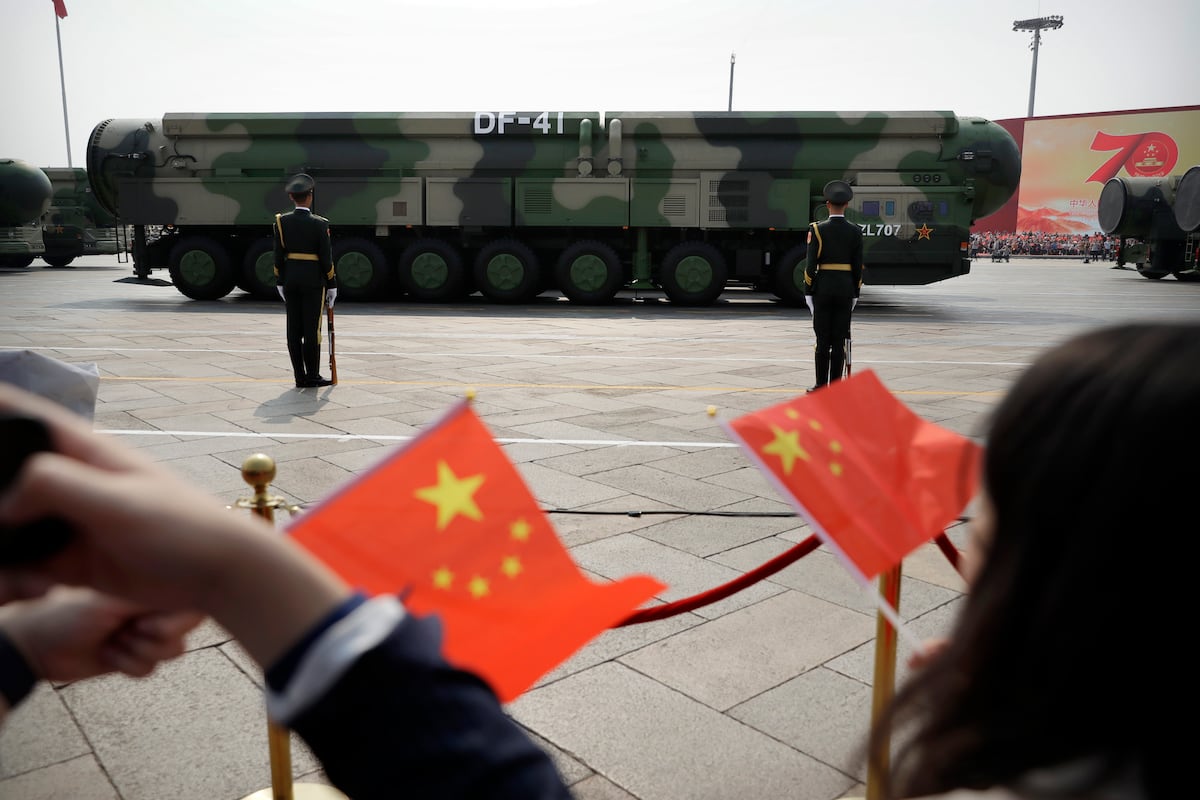France’s Strategic Nuclear Deterrent: The Next Generation M51.3 Missile
Introduction to the M51.3 Missile
On Tuesday, France’s Armed Forces Ministry announced the operational readiness of the M51.3, a sophisticated iteration of its submarine-launched strategic ballistic missile system. This milestone marks a significant advancement in France’s efforts to modernize its maritime nuclear deterrent capabilities.
Enhancements in Range and Precision
The M51.3 introduces several technological advancements, including:
- New Nuclear Warheads: The missile is equipped with the latest in nuclear warhead technology, enhancing its deterrent efficacy.
- Improved Range: It boasts an estimated range exceeding 9,500 kilometers, a notable increase from its predecessor, the M51.2, which had a range of over 9,000 kilometers.
- Advanced Penetration Capabilities: Designed to evade increasingly sophisticated adversary missile defense systems, the M51.3 aims to ensure the reliability of France’s second-strike capability.
The missile will be deployed on France’s four Le Triomphant-class nuclear-powered ballistic submarines, reinforcing the nation’s ocean-based deterrent infrastructure.
Strategic Context
The modernization of the M51 series occurs in a volatile global security environment characterized by an arms race among nuclear-capable nations. The Stockholm International Peace Research Institute (SIPRI) recently highlighted an emerging “nuclear arms race,” as nearly all nuclear-armed states are currently upgrading their arsenals. The updates by potential adversaries, particularly Russia, present a heightened risk to older missile designs, which could be more susceptible to countermeasures.
- Increased Threats: Enhanced anti-ballistic missile systems being developed by Russia could diminish the effectiveness of older French missile capabilities, thereby impairing France’s deterrence posture.
Ministerial Remarks on Strategic Autonomy
Armed Forces Minister Catherine Vautrin emphasized the importance of the M51.3 for maintaining France’s strategic autonomy within NATO. She affirmed that this development exemplifies the objectives laid out in the 2024-2030 Military Programming Law, aimed at boosting the country’s defense capabilities. Vautrin articulated:
“This achievement embodies a major ambition to accelerate our capabilities’ modernization and ensure our nuclear deterrence’s long-term credibility, which is a sovereign pillar of our security.”
France’s unique approach to nuclear deterrence involves keeping its nuclear assets independent from NATO’s command-and-control mechanisms, allowing greater national discretion over its strategic choices.
Technical Specifications and Development Timeline
The M51.3 missile is characterized by:
- Payload Capacity: It carries between four to six Multiple Independently Targetable Reentry Vehicles (MIRVs), each yielding approximately 100 kilotons—over six times the potency of the atomic bomb dropped on Hiroshima.
- Three-Stage Launch Design: The missile employs a solid-propellant design weighing more than 50 metric tons and measuring 12 meters in length.
Development efforts began in 2014, with the first successful test flight conducted in November 2023. The Directorate General for Armament (DGA) oversaw the project, collaborating with France’s Commissariat for Atomic Energy and ArianeGroup for design and propulsion tasks.
Future Developments in French Nuclear Capabilities
Looking ahead, France plans to replace its Le Triomphant-class submarines in the 2030s through the SNLE 3G program, ensuring that its nuclear deterrent remains relevant well into the 2080s. Additionally:
- Hypersonic Advancements: The country is working on the ASN4G hypersonic missile to supplant the ASMPA nuclear cruise missile currently deployed on Rafale fighter jets, integrating it into the aircraft’s future F5 configuration.
- Airborne Component: The Future Combat Air System (FCAS), a joint project with Germany and Spain, is set to be the future airborne leg of France’s nuclear deterrent, with capabilities to carry nuclear ordnance and operate from aircraft carriers.
Conclusion: The Evolution of French Defense Posture
Through modernizing its M51 missile series and enhancing its nuclear deterrence infrastructure, France is taking proactive steps to address contemporary security challenges. This comprehensive approach underlines not only France’s commitment to national defense but also its position in the broader geopolitical landscape, amidst dynamic shifts in global military capabilities and strategies.
As nations strive to balance deterrence and diplomatic engagement, France remains steadfast in ensuring a credible and capable nuclear arsenal that aligns with its strategic interests.





